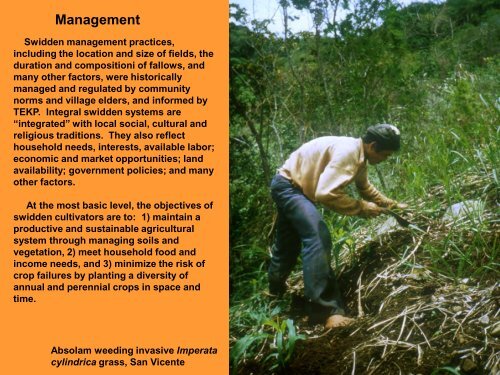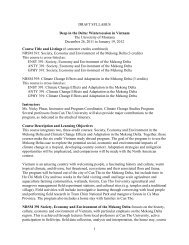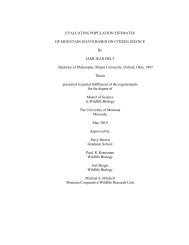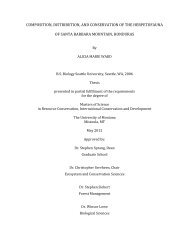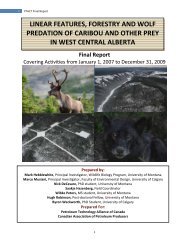Swidden Agriculture: Ancient Systems in Transition Sustaining Food ...
Swidden Agriculture: Ancient Systems in Transition Sustaining Food ...
Swidden Agriculture: Ancient Systems in Transition Sustaining Food ...
You also want an ePaper? Increase the reach of your titles
YUMPU automatically turns print PDFs into web optimized ePapers that Google loves.
Management<br />
<strong>Swidden</strong> management practices,<br />
<strong>in</strong>clud<strong>in</strong>g the location and size of fields, the<br />
duration and compositioni of fallows, and<br />
many other factors, were historically<br />
managed and regulated by community<br />
norms and village elders, and <strong>in</strong>formed by<br />
TEKP. Integral swidden systems are<br />
“<strong>in</strong>tegrated” with local social, cultural and<br />
religious traditions. They also reflect<br />
household needs, <strong>in</strong>terests, available labor;<br />
economic and market opportunities; land<br />
availability; government policies; and many<br />
other factors.<br />
At the most basic level, the objectives of<br />
swidden cultivators are to: 1) ma<strong>in</strong>ta<strong>in</strong> a<br />
productive and susta<strong>in</strong>able agricultural<br />
system through manag<strong>in</strong>g soils and<br />
vegetation, 2) meet household food and<br />
<strong>in</strong>come needs, and 3) m<strong>in</strong>imize the risk of<br />
crop failures by plant<strong>in</strong>g a diversity of<br />
annual and perennial crops <strong>in</strong> space and<br />
time.<br />
Absolam weed<strong>in</strong>g <strong>in</strong>vasive Imperata<br />
cyl<strong>in</strong>drica grass, San Vicente


